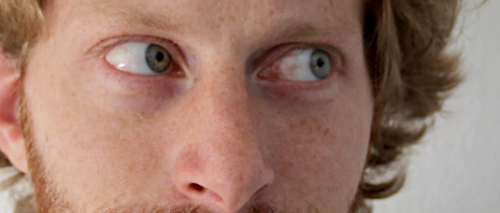A game of ping-pong for the eyes

Enjoying the landscape when traveling by train – while this activity sounds like pure relaxation, in reality, it requires maximum performance from our eyes' motor system. To prevent blurring of the passing image, our eyes need to follow the environmental pace with many repetitive brief movements. Scientists led by Professor Stefan Glasauer of LMU Munich and the Bernstein Center, in collaboration with colleagues from the Washington National Primate Research Center at the University of Washington in Seattle, have now found that neurons in the posterior parietal lobe play an important role in the conversion of the landscape stimuli into a control signal for the eye muscles.
"By means of electrophysiological recordings, we have shown that nerve cells in the so-called MSTd area combine information about the motion of the visual stimulus on the retina with the velocity of eye movements," Lukas Brostek from LMU – first author of the study – explains. Moreover, how this is done clearly differs from cell to cell – thereby enabling the generation of completely new signals. Using computer models, the researchers demonstrated that the observed distribution of signal combinations corresponds exactly to the one required to calculate the velocity of the ambient scene. This is the information the brain ultimately requires to control eye movements.
Several areas of the brain are involved in the control of the optokinetic reflex. The necessary information processing includes essentially three steps: In the first step, the speed of a visual stimulus on the retina is calculated. In the second, the proper eye motion is combined with this information to obtain the environmental velocity. This is the process that the researchers were able to localize in the brain. "The neurons whose activity we have recorded provide the basis for the final step – the unconscious control of eye muscles. In this way, they ensure that our eye movements match the pace of environmental motion and that we can recognize the passing scenery instead of seeing it blurred," Glasauer says.
More information: Lukas Brostek, Ulrich Büttner, Michael J. Mustari, and Stefan Glasauer. "Eye Velocity Gain Fields in MSTd during Optokinetic Stimulation." Cereb. Cortex first published online February 20, 2014 DOI: 10.1093/cercor/bhu024
















